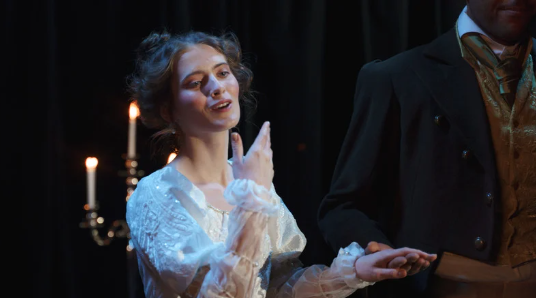
When I decided to self-publish my Legends of Muirwood trilogy, I didn’t know a lot about book cover design. Actually, I didn’t know anything. It probably shows.
My goal at the time was to get the trilogy out in the world without spending a lot of money. I bought a package that included cover design through a self-publishing platform for a bargain price, and I gave some suggestions about abbeys, forests, and fonts. They delivered what they promised: three book covers. But they were all missing what really mattered—a way to help potential readers judge whether they might like the book.

As a hybrid author with over thirty published novels, I’ve gained an unusual perspective about the process of designing cover art. I want to give you three BKMs, or “best-known methods” about book cover design so you can see what an author—indie, traditional, or hybrid—needs to keep in mind when designing or choosing a cover.
BKM #1: It’s the Wrapper
Imagine standing in line at the grocery store and seeing a king-sized Reese’s Peanut Butter Cup on sale. You buy it with your groceries, get in the car, unwrap it, and prepare to sink your teeth into that chocolatey-peanut-buttery nirvana . . . but it’s a York Peppermint Patty. You might feel frustrated because you were expecting one thing and got another. Book covers, like candy wrappers, set expectations with the reader up front. The cover clearly shows the genre of the story.
It’s very easy to check on Amazon what the bestselling books are by category and see what design elements are common to the genre. You can look at the size of the fonts, the placement of the author’s name, any bestselling tags, and the color schemes. It’s not a coincidence that a Reese’s candy wrapper looks the way it does or that stores shelve similar items next to each other. Authors are brands too, so if you want a reader to anticipate a certain genre or style of book, it helps if your cover looks similar to others in the same genre.
BKM #2: It’s Professional
Long gone are the days when mediocre-to-cringeworthy book covers (like my original Muirwood ones) would be tolerated. If I tried that now, I can’t imagine what would happen. Readers do judge a book by the cover, so it’s important to hire a professional cover designer because you don’t get a second chance to make that first impression. In fact, especially in the indie space, even the New York Times bestselling authors I know will redesign the cover of a book when they feel it isn’t connecting with the proper audience. Even if the first cover looks amazing, it’ll hurt sales if it doesn’t resonate with the right audience. Many authors have created new covers and found that the second one worked better.
This year marks the 10th anniversary release of my Legends of Muirwood trilogy. We redesigned the covers to strengthen the brand for the series and tie the series in with other books written in the same world. There’s quite a difference from the originals.

I highly recommend Bryan Cohen’s Five-day Author Ad Profit Challenge. Even if you haven’t written a book yet or have one to sell, you can still join his Facebook page and watch the videos when he runs the challenge. You’ll learn a ton (for free) about how Amazon algorithms work, how to design a cover, and how to write killer ad copy for your books. I wish this existed back when I first self-published.
Readers can tell the difference between a cheap cover and a professional one. Cover designers are mostly freelance these days, and with a little research, it’s not difficult to find ones you like. For example, most books include the name of the cover artist in the front matter, which you can see for free on Amazon using the “look inside” feature.

I can’t recommend enough getting a professional to do the job right. There are cover art stock photos you can purchase if you’re on a budget, but at the very least, hire a graphic designer to help you with the fonts, styling, and sizing. The last thing you’d want is to spend a lot of time writing a book that no one will read because it looks amateurish. I was satisfied with the covers my publisher used for my first several books, but it wasn’t until they hired Shasti O’Leary Soudant to design the cover of The Queen’s Poisoner that I learned firsthand the power of an amazing cover. You know the saying that “A rising tide lifts all boats”? After that book came out, all my books began to sell better. I’ve now hired her to do some of my indie titles as well.
BKM #3: It’s Expected
Word of mouth is the number-one way people find books they enjoy. There just isn’t a replacement for the solid recommendation of a friend or someone you trust. Readers find new authors all the time through email subscriptions to Amazon’s top Kindle book deals, BookBub, or Goodreads. There is promotional text there, of course, but the cover catches the reader’s eye first. They look at the cover for a second or two before reading the blurb. If they’re still intrigued, they’ll click on the link to see how many reviews it has, how many stars it has received, etc. These are all ways that a book is “judged” before it’s read. The reader’s visceral reaction to the cover starts it off. That’s why readers expect the cover to tell them about the genre and author. They expect a title that’s easily searchable and interesting enough to entice them to learn more.
So, let’s get over the out-of-date and untrue adage about not judging a book by its cover. We base our judgment on if the wrapper matched the content, if it was professionally done, and if it met our expectations for what we purchased and why. A great cover can’t turn a meh book into a bestseller, but there aren’t many bestsellers with a meh cover. Writers today have to be professional to come up with stories that will keep a reader turning the pages. Thankfully, there are skilled wizards of the imagination who can help aspiring authors design book covers that catch readers’ eyes and delight their hearts.

Jeff Wheeler
Jeff Wheeler is the Wall Street Journal bestselling author of the First Argentines series (Knight’s Ransom, Warrior’s Ransom, Lady’s Ransom, and Fate’s Ransom); the Grave Kingdom series; the Harbinger and Kingfountain series; the Legends and Covenant of Muirwood trilogies; the Whispers from Mirrowen trilogy; the Dawning of Muirwood trilogy; and the Landmoor novels. Jeff is a husband, father of five, and devout member of his church. He lives in the Rocky Mountains. Learn more about Jeff’s publishing journey in Your First Million Words, and visit his many worlds at his website .




The original Legends of Muirwood covers resonated with me more. That said, I started reading the trilogy with the new covers and may not have picked up the books if I saw them with the original covers first. :-/ I love this trilogy enough that I have recommended this trilogy to many people, and have done many rereads.
I do like the Queen’s Poisoner covers a lot, and think they do a really good job of showing which books go with which author 🙂
For the Poisoner of Kingfountain series, I purchased the available books and on Amazon it shows that I have purchased a previous kindle edition, and it gives the option to purchase the latest version. If the only change is the cover, it is confusing – Is the new book significantly different? Different formatting? Additional/deleted content? Different publisher, but same text? I have noticed this from other authors also, and also in audiobooks (usually though a different audiobook means a different narrator, or background music or more narrators combined…).
Thanks again for your insight and especially for your great books!
Thanks for the great advise and insite.
Jeff gives some fantastic advice here—and I love his examples of the original covers and updated covers for his first trilogy. What a difference! And what a different vibe those covers gift as to what the series is about. The other thing I noticed is that with the updated covers, it’s very clear that they are part of the same series—not just through the frame, author’s name, and fonts, but through the styles of the images themselves.